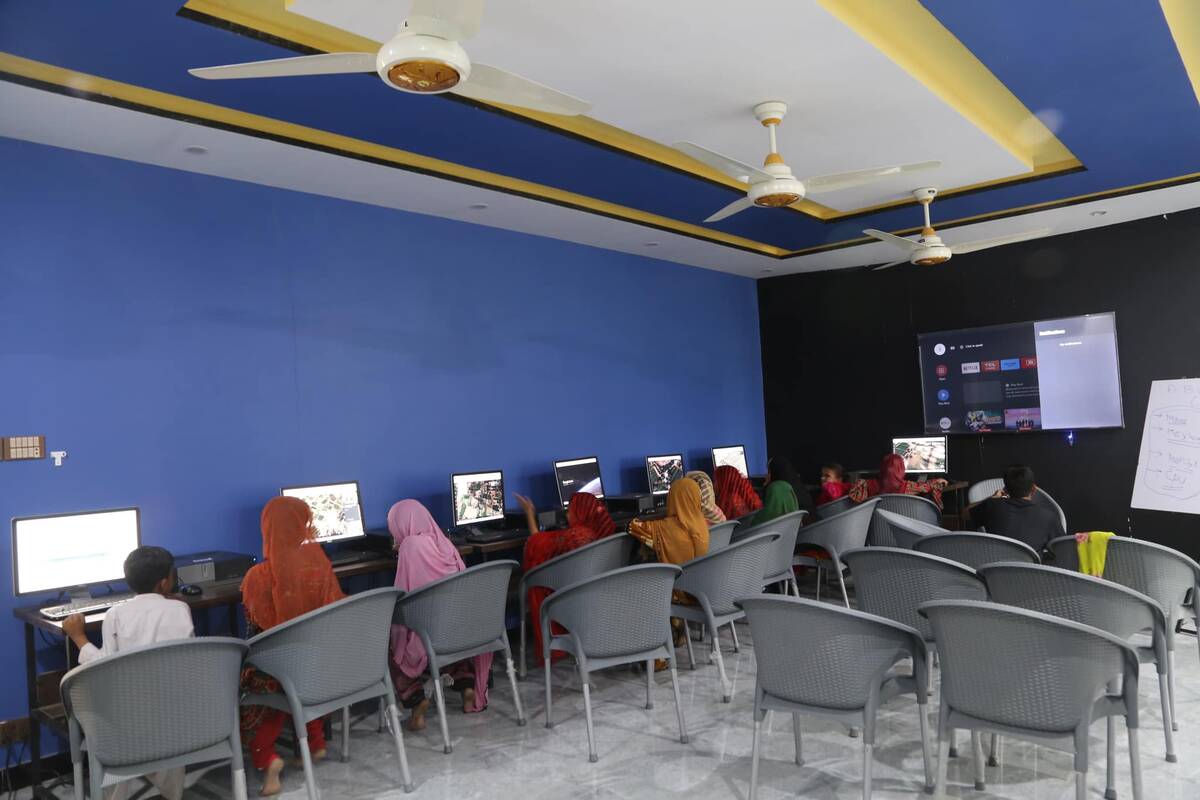ISLAMABAD: Former prime minister Imran Khan still enjoys wide public support, especially in the country’s populous Punjab and Khyber Pakhtunkhwa provinces, despite a massive crackdown against his supporters and defections of his senior party leaders since the violent protests of May 9.
About a hundred senior party leaders, including Khan’s close aides and former cabinet ministers, announced to quit the Pakistan Tehreek-e-Insaf (PTI) party while condemning the May 9 protests that spread across the country following the ex-premier’s arrest from the Islamabad High Court in a graft case.
Security forces sprang into action against “arsonists and rioters” after protesters carrying the PTI flags stormed and vandalized public buildings and military installations, including the official residence of a top general and the army headquarters in Rawalpindi. Hundreds of Khan’s supporters and senior party leaders were rounded up on charges of inciting violence. Many of them later announced to quit the party and some even said they were going to take a break from politics.
Despite the current hardships of Khan and his party, political analysts said the ex-premier was still “among the most popular leaders” in the country, thought he needed to review his policies to win the next election.
“At the moment, Khan has a direct confrontation with the establishment and no political leader, irrespective of his popularity, can form a government in Pakistan without the establishment,” Sohail Warraich, a senior journalist and political analyst, told Arab News on Friday.
The establishment is a euphemism for the country’s powerful military in Pakistan. Historically, the army has ruled the country for more than half of its 76-year existence and continues to wield considerable power in the matters related to its security and foreign affairs.
The general elections in Pakistan are scheduled to be held in October after the expiry of the five-year term of the national and provincial legislative bodies.
“The electable are leaving the party and many more will quit,” he continued. “But Khan’s vote bank is still intact.”
Warraich said the ex-premier should “review his anti-establishment policy” to galvanize the public in his favor to secure a victory in the upcoming elections.
Since his ouster from power in April last year in a parliamentary no-confidence vote, Khan has been striving to make a political comeback by riding the wave of popularity. Pakistan is a parliamentary democracy where political parties field candidates in constituencies to win a majority to form the government.
Asked about the crackdown against Khan’s party, Zebunnisa Burki, a political analyst, said the recent developments seemed to be an attempt to make the former prime minister irrelevant.
“Apparently, the whole move appears to be suggesting a minus Imran Khan in the upcoming elections,” she said, adding the “powerful circles” in Pakistan seemed to be dismantling PTI into different factions to divide Khan’s public support.
She maintained if the PTI got divided into different groups before the elections, the future of Khan-led party would be bleak since “the electable still enjoy a significant support in their constituencies even without Imran Khan.”
“The PTI defectors may also form a forward bloc to win over the party supporters, but then again the voter still remains loyal to Khan only,” she continued. “There seems to be interesting times ahead in Pakistani politics, but it will be extremely difficult to take Khan out of it.”
PTI leaders and loyalists describe the prevailing circumstances as a “temporary” phase in their party’s history, saying they will not make much difference to their support base.
“The party is still intact, and these defections won’t make any difference to Imran Khan’s popularity,” Sayed Zulfi Bukhari, the ex-premier’s close aide, told Arab News. “This is all very temporary.”
However, Bukhari acknowledged the crackdown was aimed at dismantling the party, though he added these attempts would not succeed as long as the people were supporting Khan.
“Khan still enjoys overwhelming public support across Pakistan and it is even more than before as every arrest is making PTI stronger and resilient,” he said.
Bukhari predicted “70 percent” turnout in the upcoming elections since people were angry to see what was happening to the former prime minister and would do everything to bring him back to power.
“Imran Khan is a symbol of hope for majority of Pakistanis since they believe only he can steer the country out of the current political and economic mess,” he said.
The political parties in Pakistan have suffered defections and desertions in the past when their leaders fell apart from the military establishment, but they still remained part of parliamentary politics with varying strength.
“All surveys and polls suggest one thing: Imran Khan is the most popular leader in Pakistan, especially in Punjab and KP provinces, and his PTI party would sweep the upcoming polls,” Habib Akram, a senior journalist and political commentator, told Arab News.
He said there was no future of any forward bloc or electable without Khan, adding the recent by-elections in the country had “clearly demonstrated that people’s vote is only for Khan.”
“In this age of digital and social media, importance of political parties has increased manifold as people prefer parties over electable while voting,” he said. “As long as Imran Khan is alive and doing active politics, people will vote for him.”




















